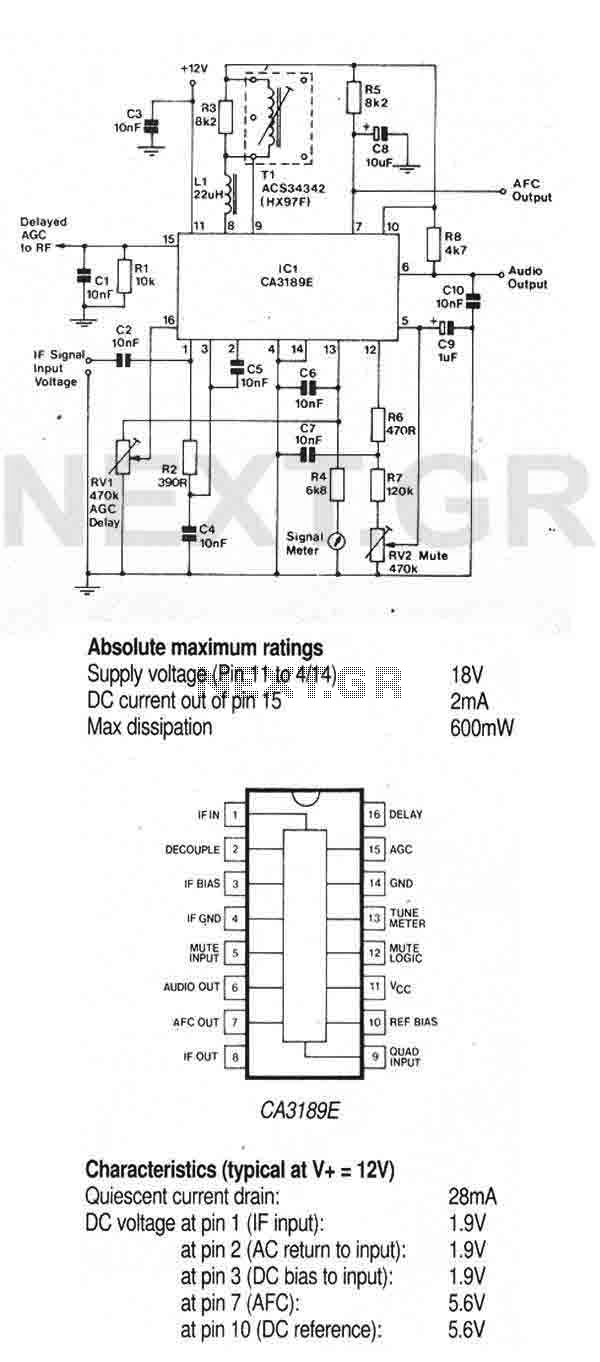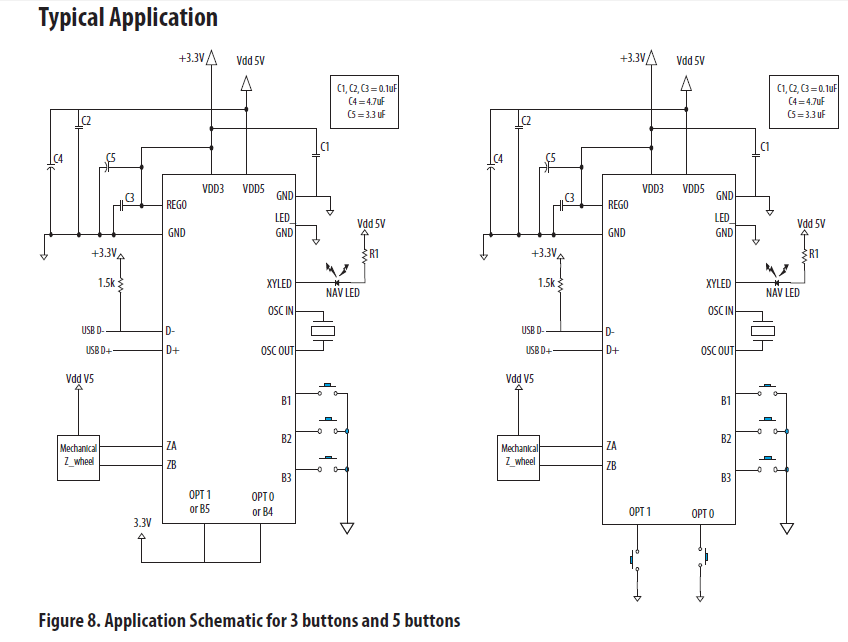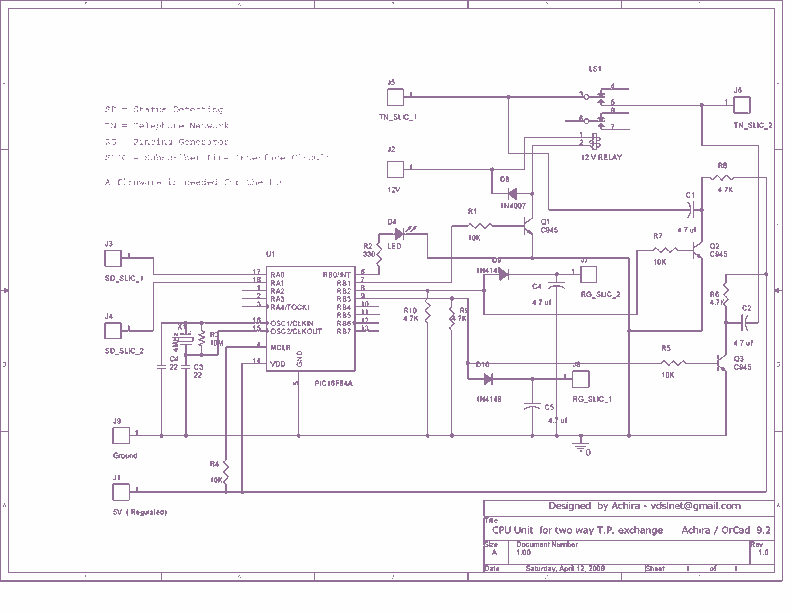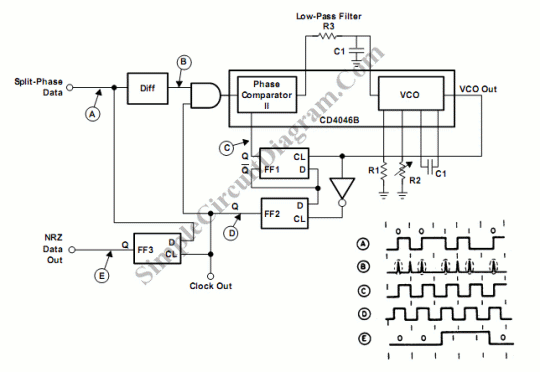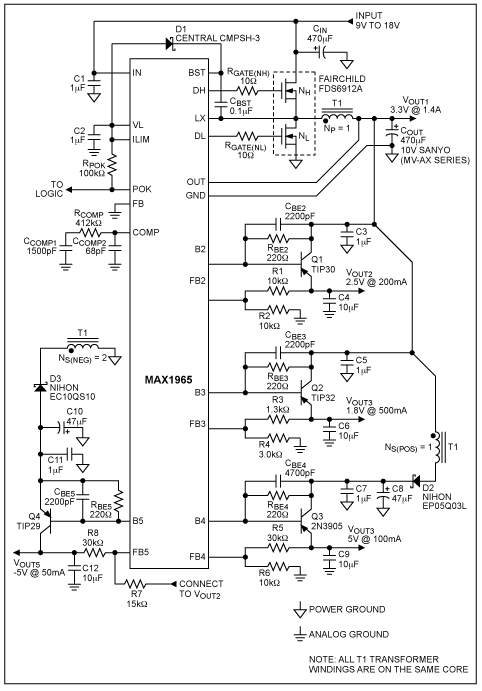
Data Acquisition System Ii
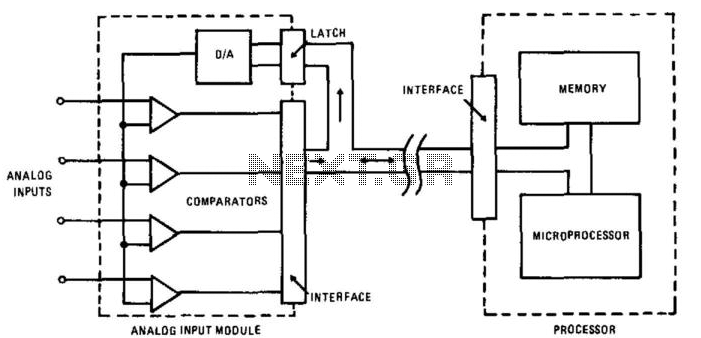
In this circuit, an HA-4900 series comparator is utilized alongside a digital-to-analog (D/A) converter to create a versatile, multichannel analog input for a data acquisition system. The processor first transmits an address to the D/A converter, after which it reads the digital word produced by the comparator outputs. To perform a simple comparison, the processor sets the D/A to a specific reference level and then examines one or more comparator outputs to ascertain whether the inputs are above or below this reference. A window comparison involves two such cycles with two reference levels established by the D/A. One approach to digitizing the inputs is for the processor to increment the D/A in steps. The D/A address, as each comparator switches, represents the digitized level of the input. While this stairstepping method is slower than successive approximation, it allows for the digitization of all channels during a single staircase ramp.
The circuit employs an HA-4900 series comparator, known for its high-speed performance and precision in analog signal processing. The D/A converter interfaces with the processor to translate digital commands into corresponding analog voltages. This configuration enables the system to handle multiple analog input channels efficiently.
In operation, the processor initiates the process by sending a specific address to the D/A converter, which corresponds to a particular channel. The D/A converter then generates an analog voltage that serves as a reference level for the comparator. The HA-4900 comparator compares this reference voltage against the incoming analog signals. The output from the comparator indicates whether the input signal is above or below the reference level, providing a binary indication that is critical for the data acquisition system.
For more complex applications, the window comparison technique is employed, where two reference levels are defined. This allows the system to determine not only if the signal is above or below a single threshold but also to assess if it falls within a specific range. This is particularly useful in applications where monitoring thresholds is crucial.
The digitization process is accomplished through a method known as stairstepping, where the D/A converter incrementally changes its output voltage in discrete steps. As the comparator outputs toggle, the corresponding D/A address reflects the digitized level of the input signal. Although this method is inherently slower than the successive approximation technique, it has the advantage of allowing simultaneous digitization of multiple channels during a single staircase ramp, thereby enhancing the system's overall efficiency.
This circuit design is particularly beneficial for applications requiring high precision and rapid response times, such as in instrumentation and control systems, where accurate analog signal processing is essential. In this circuit, an HA-4900 series comparator is used in conjunction with a D/A converter to form a simple, vers atile, multichannel analog input for a data acquisition system. The processor first sends an address to the D/A, then the processor reads the digital word generated by the comparator outputs, lb perform a simple comparison, the processor sets the D/A to a given reference level, then examines one or more comparator outputs to determine if the inputs are above or below the reference. A window comparison consists of two such cycles with two reference levels set by the D/A. One way to digitize the inputs would be for the processor to increment the D/A in steps. The D/A address, as each comparator switches, is the digitized level of the input. While stairstepping, the D/A is slower than successive approximation; all channels are digitized during one staircase ramp.
🔗 External reference
The circuit employs an HA-4900 series comparator, known for its high-speed performance and precision in analog signal processing. The D/A converter interfaces with the processor to translate digital commands into corresponding analog voltages. This configuration enables the system to handle multiple analog input channels efficiently.
In operation, the processor initiates the process by sending a specific address to the D/A converter, which corresponds to a particular channel. The D/A converter then generates an analog voltage that serves as a reference level for the comparator. The HA-4900 comparator compares this reference voltage against the incoming analog signals. The output from the comparator indicates whether the input signal is above or below the reference level, providing a binary indication that is critical for the data acquisition system.
For more complex applications, the window comparison technique is employed, where two reference levels are defined. This allows the system to determine not only if the signal is above or below a single threshold but also to assess if it falls within a specific range. This is particularly useful in applications where monitoring thresholds is crucial.
The digitization process is accomplished through a method known as stairstepping, where the D/A converter incrementally changes its output voltage in discrete steps. As the comparator outputs toggle, the corresponding D/A address reflects the digitized level of the input signal. Although this method is inherently slower than the successive approximation technique, it has the advantage of allowing simultaneous digitization of multiple channels during a single staircase ramp, thereby enhancing the system's overall efficiency.
This circuit design is particularly beneficial for applications requiring high precision and rapid response times, such as in instrumentation and control systems, where accurate analog signal processing is essential. In this circuit, an HA-4900 series comparator is used in conjunction with a D/A converter to form a simple, vers atile, multichannel analog input for a data acquisition system. The processor first sends an address to the D/A, then the processor reads the digital word generated by the comparator outputs, lb perform a simple comparison, the processor sets the D/A to a given reference level, then examines one or more comparator outputs to determine if the inputs are above or below the reference. A window comparison consists of two such cycles with two reference levels set by the D/A. One way to digitize the inputs would be for the processor to increment the D/A in steps. The D/A address, as each comparator switches, is the digitized level of the input. While stairstepping, the D/A is slower than successive approximation; all channels are digitized during one staircase ramp.
🔗 External reference
Warning: include(partials/cookie-banner.php): Failed to open stream: Permission denied in /var/www/html/nextgr/view-circuit.php on line 713
Warning: include(): Failed opening 'partials/cookie-banner.php' for inclusion (include_path='.:/usr/share/php') in /var/www/html/nextgr/view-circuit.php on line 713
